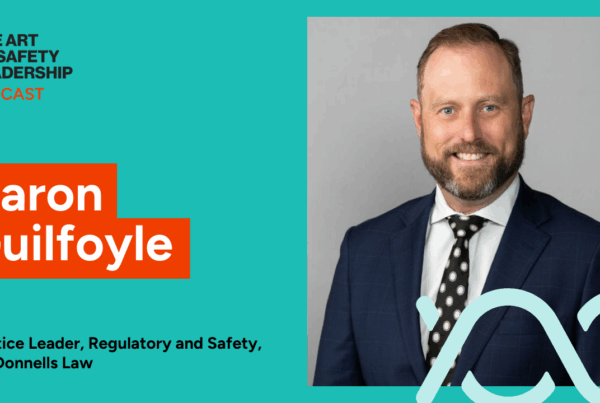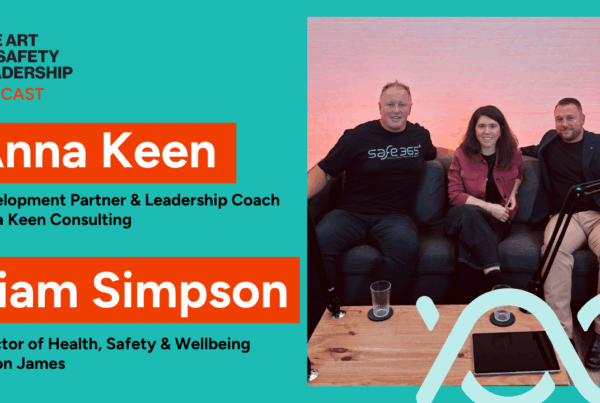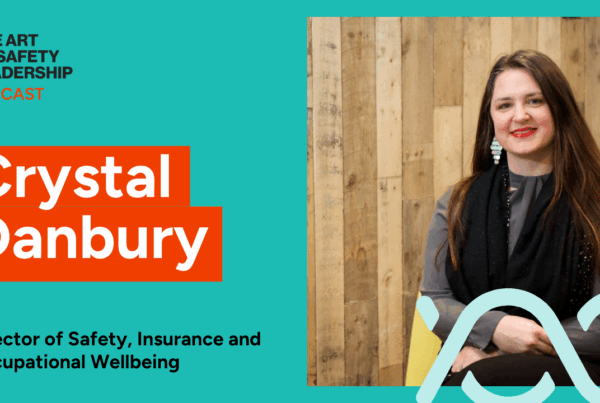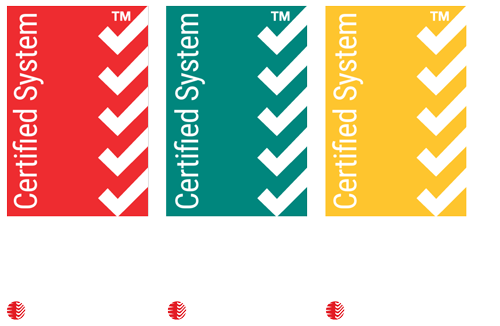How do we know what gold star health and safety looks like when operating in isolation, without comparison and the ability to draw on the effectiveness of others? Health and safety benchmarking provides context for our measurement of success and fuels our desire to keep aiming higher.
Drawing on our eight years’ of experience and our wealth of data, we’ve identified four impactful outcomes of benchmarking health and safety performance.
- Identifying gaps in health and safety practice to drive continuous improvement.
- Maximising performance to enhance a strong brand in the market.
- Engaging internal audiences to buy into a collective commitment to lifting the bar.
- Increasing safety across sectors.
What is benchmarking in health and safety?
The value of benchmarking lies in its ability to provide valuable insights into systemic trends, best practice and opportunities for improvement.
It goes beyond merely comparing data or imitating competitors. It’s a methodical approach that involves evaluating your organisation’s health and safety performance against peers in your industry, geography or internally across divisions. This process helps you understand your organisation’s strengths and weaknesses relative to best practice. By comparing key performance metrics, you can identify opportunities to optimise processes, enhance efficiency and gain a competitive advantage, ultimately leading to meaningful improvements in your health and safety maturity. And as a profession with a unifying goal to see more people go home safe and well each day, benchmarking creates opportunities to accelerate learning and adoption of successful impact.
Organisations that participated in the occupational health and safety benchmarking project for Safework Australia reported that “the most useful form of benchmarking involves:
- The analysis of processes and procedures in their own enterprise
- The analysis of other enterprises, and
- The adaptation of the findings to guide improvements.”
https://www.safeworkaustralia.gov.au/system/files/documents/1702/benchmarkingohs_1996_pdf.pdf
Determining if you’re doing great, in the middle of the pack or could improve is relative and depends on what indicators you use as the basis for your benchmarking. To get the most out of benchmarks, it pays to have a well defined set of criteria. Some things to consider include:
- What exactly do you want to compare?
- Who do you want to benchmark against? For example, do you want to measure and compare your organisation across industries, geographies, market placement, size or even internally between teams?
- What will you do with the information? Results are meaningless until you do something with them, so analyse them, plan for improvement and regularly monitor your progress.
4 reasons why health and safety benchmarking is important
1. Benchmarking provide context and competition in the quest for the safest workplaces
The fundamental objective of benchmarking is to pinpoint performance gaps relative to what great looks like and drive continuous improvement.
And the reason it works is because it taps into the innate competitiveness in human behaviour – how can others be achieving y when we’re only achieving x and what can we do to be as good as or challenge us all to be better?
Comparing yourself in a vacuum can lead to a warped perspective of how good your health and safety performance actually is. Benchmarking can provide relative context to internal thinking. Unlike lagging and leading performance indicators which provide an internal view of health and safety practices, benchmarking is an external measure that provides a reality check of how good you actually are, and what good can look like.
In our inaugural Insights Report released earlier this year, we saw that sectors that have traditionally embraced safety culture assessment and benchmarking activities, such as mining and utilities, show signs of increased safety maturity compared to other sectors.
Of course, competition can bring out the worst in human behaviour, and there are some that are lured to cut corners or engage in benchmarking activities with ulterior motives to inflate their position rather than actually doing the work to improve. Just like sports, benchmarking needs rules, and you need to engage in it ethically and follow the rules.
2. Benchmarking enhances your business brand in market
In today’s market, customers, potential employees, investors and suppliers look at more than just the minimum standards when making a choice to engage with a business. There’s a growing emphasis on a business’ dedication to the welfare of the people who work for them, and the people and communities they serve.
Health and safety benchmarking offers an objective view of an organisation’s performance and positions them relative to others in the market, sector or industry to help determine if they’re a market leader, middle of the pack, or lagging behind.
For top performers, the results can yield additional business benefits and be leveraged as a source of competitive advantage. That often includes increased brand loyalty, reduced staff turnover, more competitive staff recruitment, greater negotiating authority with suppliers, increased productivity, and a much better loss performing ratio that results in better commercial terms for insurance, just to name a few.
Benchmarking can also offer significant financial advantages. The most literal relationships here can be demonstrated with insurance. Worker harm directly correlates to workers compensation, and the associated premiums for business that come straight off their ledgers bottom line. As insurance markets become more competitive, innovative insurers are seeking better metrics to understand and measure what organisations are doing to change the trajectory of harm proactively. As customers can provide more data to demonstrate they have a proactive or leading safety culture, and are benchmarked as leaders in their field, they are making a strong case to insurers that they are an attractive customer to have on the books. This introduces competition, and we’ve seen customers use this to their advantage to stifle premium growth compared to their sector peers, or in some cases attract significant premium reductions.
3. Benchmarks help internal engagement
Benchmarking can be an effective engagement tool, which is just as important as the benchmark itself.
Providing visibility of how an organisation stacks up against others in the market or between internal divisions can engage the Board, management, employees and stakeholders in discussions about what the organisation is doing well, what others are doing better, and the gaps they want to close. Used in this way, health and safety benchmarks can develop a collective commitment to lifting the bar and foster an environment where health and safety is part of an organisation’s DNA.
An ecosystem is only as good as the weakest partner, so a collective commitment is particularly important in organisations with multiple departments or contractors, for example hospitals, airports, facilities management, and construction.
4. Benchmarking can increase safety culture across a sector
Not only does health and safety benchmarking help individual businesses improve their safety maturity, but the rising tide of safety culture across a sector can be beneficial in creating value by encouraging sector-wide continuous improvements.
There are some sectors where this cross proposition is really obvious, with tourism being one of them. The tourism sector was highlighted as one of the leading sectors in our Insights Report released earlier this year, and it’s no surprise given how critical the success factor of a good safety record is to their long-term sustainability. Even a minor incident can greatly impact a destination’s reputation, ability to attract and retain the best talent and dissuade potential clients.
Safe365 Insight Report provides a clear benchmark
The first of its kind, our 2024 Insights Report released earlier this year provides the market with a really clear picture of what doing health and safety well looks like. The Report provides a clear benchmark for effective health and safety practices and a valuable opportunity for organisations to evaluate how they measured up. Quantifying safety culture maturity at scale by aggregating data gathered from thousands of organisations, we unlocked insights and learnings and identified the strengths and weaknesses across industries, sectors and countries. One of the key drivers for sharing this information was to invite safety and business leaders to absorb the insights and cast an eye internally to ask, ‘if this is what the market looks like, is that consistent with what we’re seeing in our own organisation?’
Do you employ benchmarking within your health and safety engagement strategy? Share your insights with us in the Safety Leaders’ Forum on LinkedIn.
 About Nathan Hight
About Nathan Hight
Nathan has dedicated over two decades to public and workplace health, safety and wellbeing. Over that time he has advised some of the world’s most recognised brands, helping to elevate standards in health, safety, wellbeing, leadership and culture. He has been the General Manager of Surf Life Saving New Zealand and Surf Life Saving Australia, as well as the Chair of the ACC Drowning Prevention Strategy, Environmental Advisory Committee from 2007 – 2010. In 2016, Nathan and Mark Kidd co-founded 365 Ventures, a technology company focused on shifting companies towards more proactive risk environments and a more effective quantification of the value of health and safety culture.

